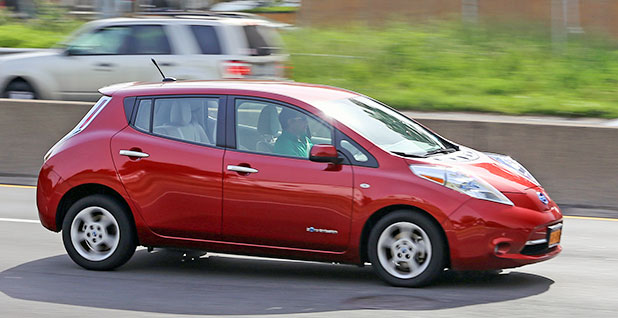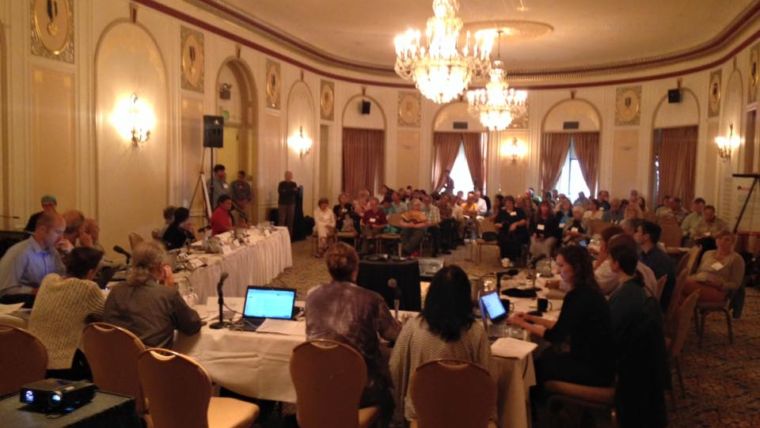Those of you who have been receiving my blogs for some time know that I firmly believe that by 2025 virtually all mass produced new cars that are being sold will be either fully electric or drive 90% or more on electricity. This report continues to support that concept.
Sooner, rather than later, one of the major psychological barriers, range anxiety, will be overcome. This barrier will crumble as less expensive vehicles with higher ranges of 200 miles and more hit the market. The first will be the Chevrolet Bolt coming out this fall.
“people could replace 87 percent of traditional cars with currently available low-cost EVs.
Once low-cost electric cars with longer driving range, like the Chevy Bolt and the Tesla Model 3, become available next year, EVs could replace 95 percent of those on the road today.”
EVs could replace 90% of cars — study
Ariel Wittenberg, E&E reporter
Monday, August 15, 2016
Photo courtesy of Flickr
Almost 90 percent of cars on the road today could be replaced with low-cost electric vehicles, said a study from Massachusetts Institute of Technology researchers published today in the journal Nature Energy.
Low-cost EVs available on the market, like the Nissan Leaf, can only travel an average of 90 miles between charges. But the shorter range would not inhibit the majority of trips people take in passenger vehicles, the study found.
The paper seeks to debunk the concept of “range anxiety” — consumer fears that they will run out of power before reaching a destination.
“It is an area where common sense can lead to very different conclusions,” MIT energy studies professor Jessika Trancik said.
“Some people are very concerned about range constraints and others aren’t, but there isn’t a lot of information for consumers to make informed decisions,” said Trancik, who authored the study.
Trancik compiled GPS data and national travel surveys to assess the real-world habits of millions of drivers, then calculated how many trips people could make within the range of a low-cost EV. Trancik assumed that cars would charge only once per day — either overnight at home or during work hours.
She found that people could replace 87 percent of traditional cars with currently available low-cost EVs.
Once low-cost electric cars with longer driving range, like the Chevy Bolt and the Tesla Model 3, become available next year, EVs could replace 95 percent of those on the road today.
“This is the technical potential, this is what is possible,” Trancik said.
Even though consumers don’t usually drive more than the 90-mile range of current low-cost EVs, Trancik suggested people could rely on car sharing or similar services for traveling farther.
Therefore, she said, if car buyers calculated how many miles they typically drive per day and assessed their options for longer trips, more people might be willing to purchase electric cars.
“Really, the goal here is to answer the question of how constraining is the limited range of low-cost cars today, and what can we do about it,” she said.
“I understand why people are anxious about having a car with limited range, but I think some of that anxiety could be reduced or alleviated with information about on what days they might be likely to exceed the range and whether there are convenient alternatives that can help reduce anxiety and increase adoption.”
Range anxiety may persist
Cosmin Laslau, senior analyst at Lux Research Inc., a firm that focuses on a variety of industries, said Trancik’s study illustrates why many automakers first concentrated on building shorter-range EVs.
“They did a lot of research and found the average requirement for the average consumer for what they needed to drive per day and designed around that,” he said.
But, as automakers learned, there is “a big gap between what consumers need and what consumers will buy,” he said. “If someone only drives 20 to 40 miles per day, that doesn’t mean they aren’t worried about the time they might have to drive 100 miles.”
Trancik said she believes that if more consumers were educated about their driving habits, it could spur EV adoption. But Laslau said he was not so certain range anxiety wouldn’t persist.
“I do think there are a fair amount of people who really are aware of how much they drive per day and are worried about this worst-case scenario,” he said.
And range anxiety isn’t the only obstacle EVs face in winning over consumers. Laslau said automakers could do more to train dealers about how to talk to consumers about EVs.
That idea is backed by a report from the Sierra Club published last week detailing the experiences of consumers shopping for EVs.
For that report, Sierra Club volunteers visited or called 308 dealerships in 10 states with EV sales requirements.
Many of the dealerships did not have any EVs on the lot, and for those that did, 14 percent said the cars were not charged enough for a test drive.
Also, almost 33 percent of dealerships with EVs on the lot did not discuss federal or state tax credits and rebates with the volunteers.
Twitter: @arielwittenberg Email: awittenberg@eenews.net




